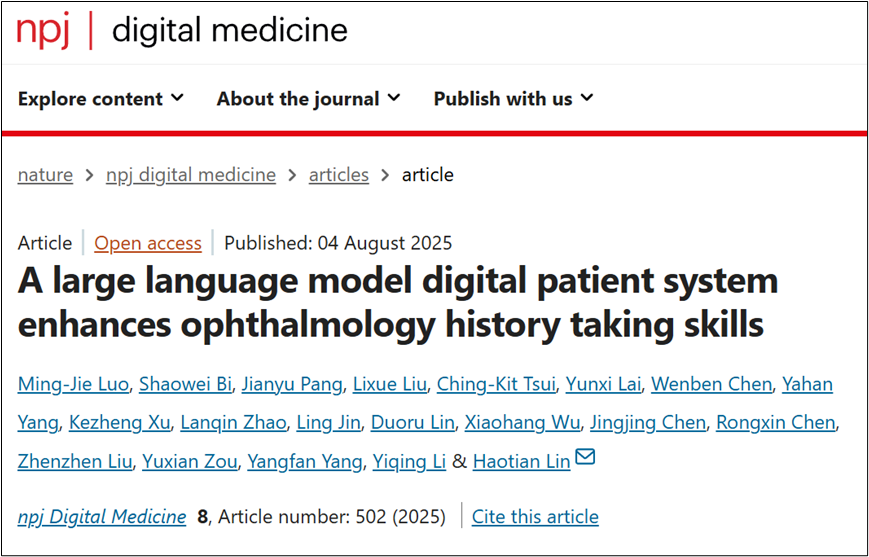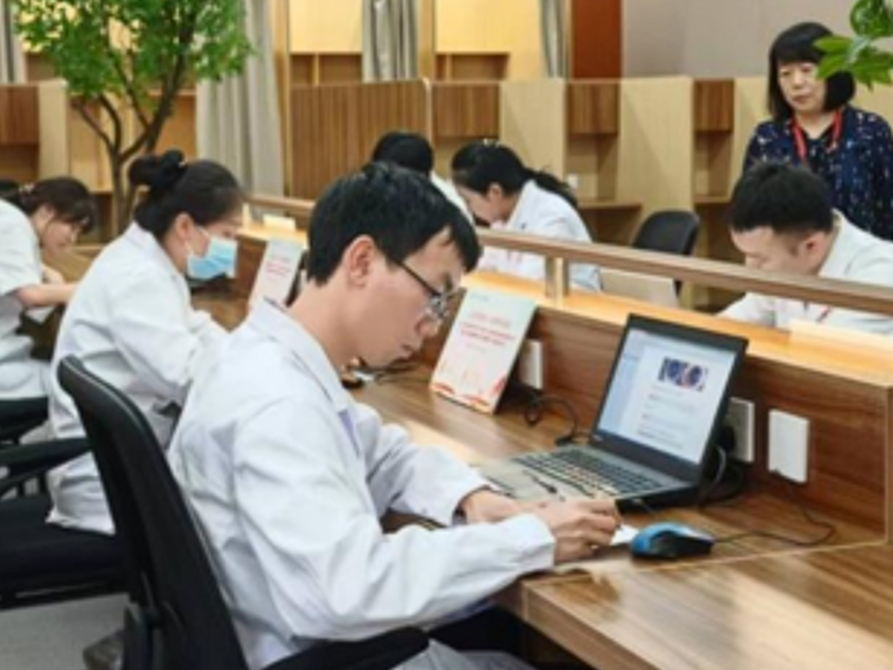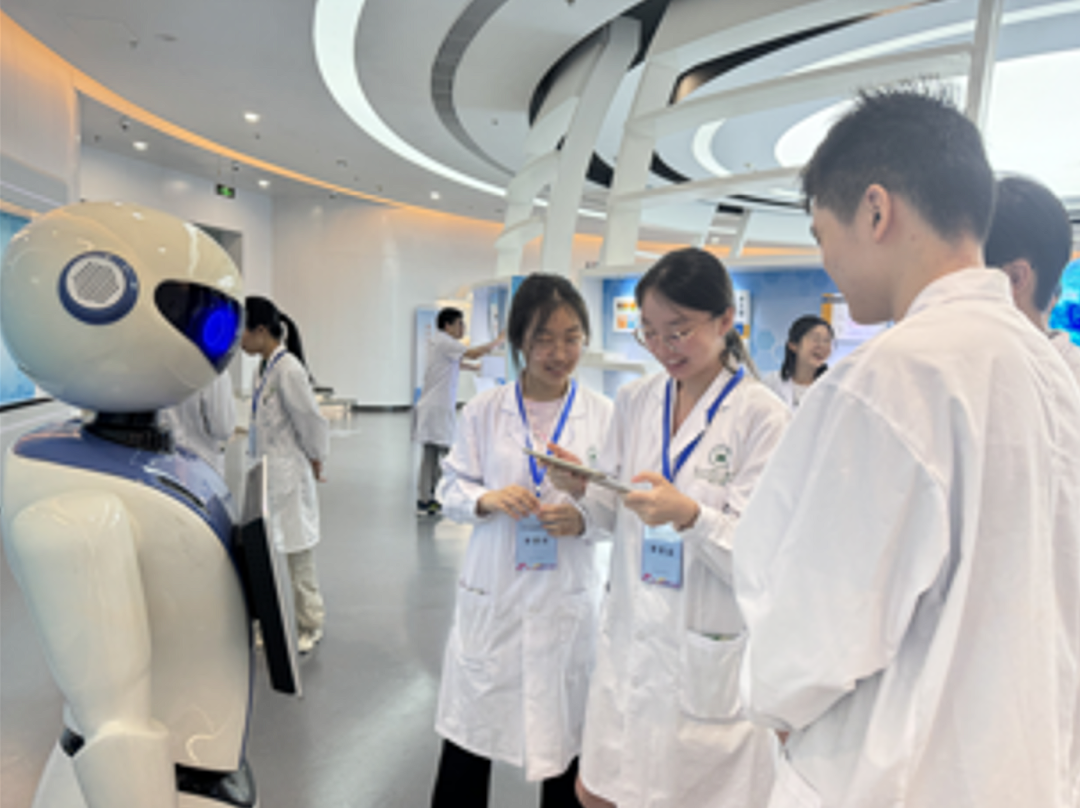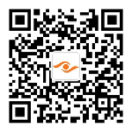
"Patients are the best teachers for doctors." However, in real-world clinical teaching, students often face challenges such as insufficient case exposure, limited opportunities for patient interaction, and patient non-cooperation. Especially in the early stages of clinical training, medical students frequently find themselves "eager to learn but lack opportunities, eager to practice but lack patients." Traditional teaching methods reliant on real patients struggle to meet the demands of large-scale, systematic training. As a result, critical competencies like history taking, clinical reasoning, and communication skills are difficult to cultivate effectively, prolonging the physician development cycle.
Simultaneously, although artificial intelligence (AI) technology has advanced rapidly in China and achieved numerous successes in the medical field, its application in medical education remains nascent. Integrating AI into teaching to address the core pain points of "difficulty finding cases" and "difficulty conducting teaching" is a crucial direction requiring breakthroughs in current medical education.
To change this situation, the research team led by Professor Lin Haotian at Zhongshan Ophthalmic Center (ZOC), Sun Yat-sen University, has developed a "Digital Patient Teaching System" for clinical history-taking training of medical students. Based on their self-developed ophthalmic large language model, ChatZOC, and leveraging the domestic Ascend computing platform, the system simulates real patients. It focuses on common ophthalmic diseases, replicating authentic consultation scenarios. Medical students can interact with the "digital patient" via voice, independently completing the entire clinical pathway—including history taking, preliminary diagnosis, and treatment planning—while receiving immediate feedback and improvement suggestions from the system. This achieves a true integration of "teaching, learning, and assessment." In August 2025, the research findings were published online in the journal npj Digital Medicine under the title "A Large Language Model Digital Patient System Enhances Ophthalmology History Taking Skills." This study represents China's first successful practice of deeply embedding a large language model into real-world medical teaching scenarios. It not only demonstrates the team's strength in exploring medical AI and educational reform but also addresses the strategic national need for cultivating medical talent.

Research paper published online in npj Digital Medicine, August 2025
The research team conducted an educational application study with medical students. Results showed that students using the Digital Patient Teaching System improved their history-taking skills by an average of approximately 20% compared to those using traditional methods. The system not only allows students to "practice more, ask in detail, and learn from mistakes affordably" but also significantly enhances their clinical reasoning and doctor-patient communication skills. Over 65% of students reported the system as "more realistic, more efficient, and more engaging," stating it felt "like interacting with a real patient."

The Digital Patient Teaching System provides immediate feedback and improvement suggestions.
Supported by Sun Yat-sen University and Zhongshan Ophthalmic Center, the system has undergone continuous iteration and optimization. It has been successfully implemented at the National Ophthalmology Postgraduate Forum and the 1st & 2nd Guangdong Provincial Ophthalmology Residency Skill Competitions, receiving high praise from experts both within and outside the province. They recognize its significant demonstrative value in promoting the intellectualization and standardization of clinical teaching. This achievement stems from the close collaboration within ZOC and the contributions of Prof. Lin Haotian, Prof. Li Yiqing, Chief Physician Zuo Chengguo, Chief Physician Yang Yangfan, Chief Physician Liu Zhenzhen, Associate Chief Physician Chen Rongxin, Associate Chief Physician Tan Xuhua, and Ms. Zou Yuxian in areas like instructional design, system optimization, teaching practice, and competition organization.
In the future, this system can also be widely applied in the clinical teaching and assessment of resident and advanced training physicians. Compared to traditional Standardized Patient (SP) training, it boasts extremely low marginal costs. Training resources can be replicated and scaled massively, significantly reducing training expenses. The advantages of the Digital Patient Teaching System lie not only in technological innovation but also in its practical solution to the long-standing teaching challenges of "lacking people (patients/examiners), lacking cases, and lacking time." It provides equitable, high-quality teaching resources while protecting patient privacy, holding promise for extending the teaching expertise of top-tier hospitals to grassroots regions and alleviating the uneven distribution of quality resources.


The Digital Patient Teaching System implemented at the National Ophthalmology Postgraduate Forum and the Guangdong Residency Skill Competition
Zhongshan Ophthalmic Center of Sun Yat-sen University consistently prioritizes clinical teaching needs and actively explores pathways for the deep integration of AI and medical education. We believe that in the near future, "digital patients" will become valuable companions on every doctor's journey, providing robust technological support for enhancing the quality and efficiency of medical education in China.
Research Team Introduction
Prof. Lin Haotian's Team, Zhongshan Ophthalmic Center, Sun Yat-sen University
This study was led by the team of Prof. Lin Haotian, Director of the State Key Laboratory of Ophthalmology at Zhongshan Ophthalmic Center, Sun Yat-sen University. Prof. Lin's team has long been dedicated to the development and clinical application of medical artificial intelligence, with a sustained focus on integrating ophthalmic intelligent diagnosis and treatment technologies with innovative medical education tools. In this research, building upon their self-developed ophthalmic large language model, ChatZOC, and utilizing the domestic Ascend computing platform, the team employed key technologies such as semantic understanding, knowledge graph construction, and human-computer interaction to create the "Digital Patient Teaching System" suitable for widespread use in teaching and assessment. This system pioneers the integrated assessment of multi-dimensional competencies, including ophthalmic history taking, diagnostic logic training, and communication skills feedback, offering a feasible pathway and technical paradigm for the deep application of AI in medical teaching. The team emphasizes the practical translation and application of results; the system is already being explored in various scenarios like residency competitions and postgraduate teaching, helping to build a new talent cultivation model adaptable to the future healthcare system. The related technologies also lay the foundation for subsequent promotion to other disciplines and primary care institutions.
The team leads key national projects including the National Key R&D Program of China and the Major Research Plan of the National Natural Science Foundation of China. They have published over 200 papers in top-tier international journals such as Nature, Nature Medicine, Nature Biomedical Engineering, and The Lancet Digital Health, secured 47 domestic and international patents, 12 software copyrights, and successfully translated 5 achievements into practical applications.
Author Information
LUO Mingjie (Postdoctoral Fellow), BI Shaowei (PhD), PANG Jianyu (PhD), and LIU Lixue (Postdoctoral Fellow) from Zhongshan Ophthalmic Center, Sun Yat-sen University, are co-first authors. Prof. LIN Haotian from Zhongshan Ophthalmic Center, Sun Yat-sen University, is the corresponding author. Zhongshan Ophthalmic Center of Sun Yat-sen University / State Key Laboratory of Ophthalmology is the primary affiliation.
Link to Original Paper:











